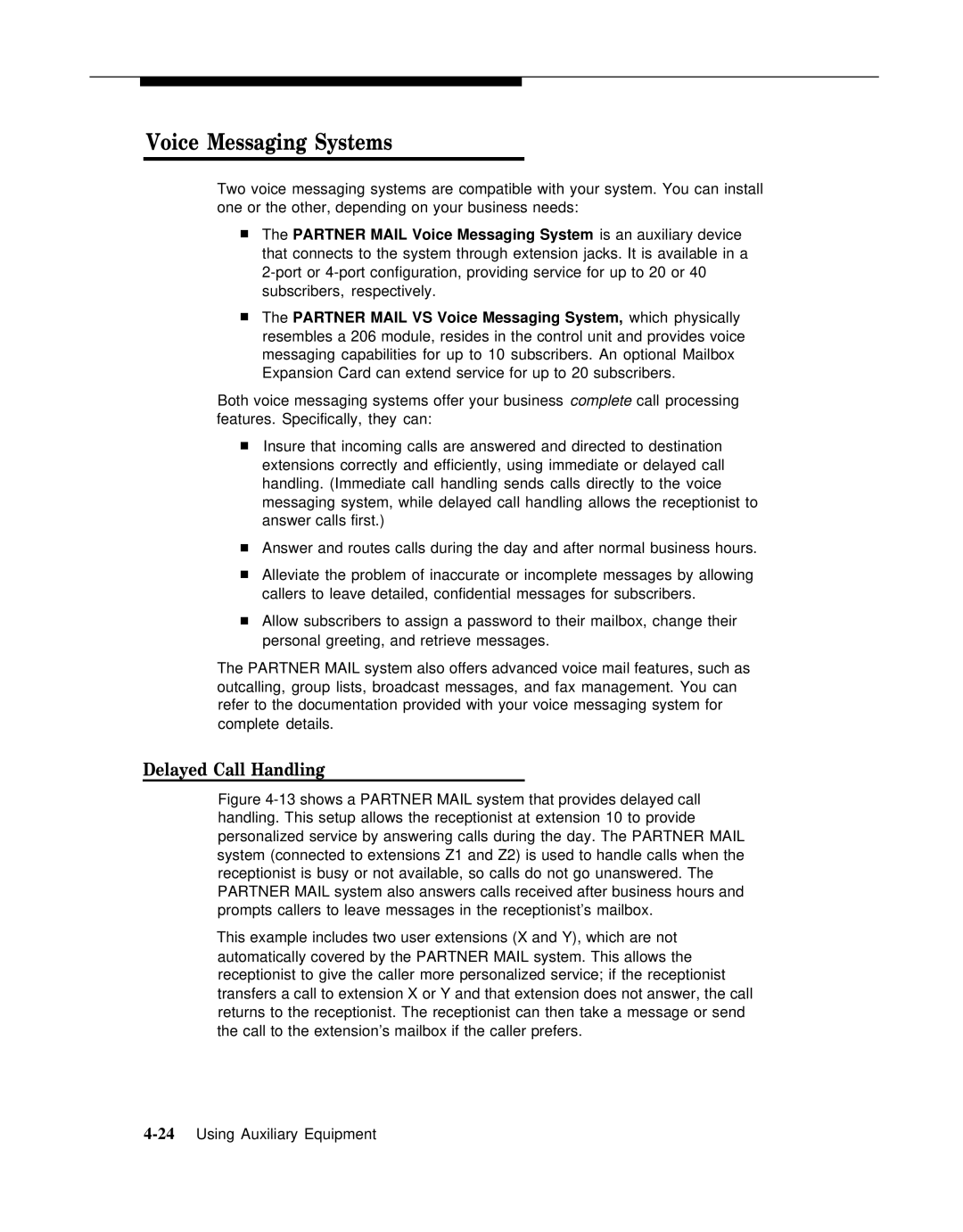
Voice Messaging Systems
Two voice messaging systems are compatible with your system. You can install one or the other, depending on your business needs:
■The PARTNER MAIL Voice Messaging System is an auxiliary device that connects to the system through extension jacks. It is available in a
■The PARTNER MAIL VS Voice Messaging System, which physically resembles a 206 module, resides in the control unit and provides voice messaging capabilities for up to 10 subscribers. An optional Mailbox Expansion Card can extend service for up to 20 subscribers.
Both voice messaging systems offer your business complete call processing features. Specifically, they can:
■Insure that incoming calls are answered and directed to destination extensions correctly and efficiently, using immediate or delayed call handling. (Immediate call handling sends calls directly to the voice messaging system, while delayed call handling allows the receptionist to answer calls first.)
■Answer and routes calls during the day and after normal business hours.
■Alleviate the problem of inaccurate or incomplete messages by allowing callers to leave detailed, confidential messages for subscribers.
■Allow subscribers to assign a password to their mailbox, change their personal greeting, and retrieve messages.
The PARTNER MAIL system also offers advanced voice mail features, such as outcalling, group lists, broadcast messages, and fax management. You can refer to the documentation provided with your voice messaging system for complete details.
